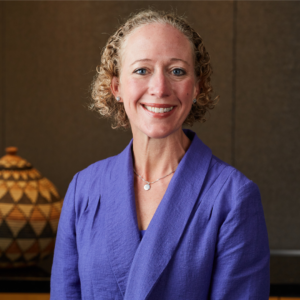5 tips to prepare for QAPI
The Affordable Care Act (ACA) of 2010 was the nation’s quality of care call to action. Mandating that nursing home providers institute both a formal, facility-wide compliance and quality assurance and performance improvement (QAPI) program while enhancing nurse aide training across their facilities, the ACA aims to elevate the quality of care in America’s nursing homes over the next few years.
“Our traditional QA [quality assurance] approach, particularly in nursing homes had a lot to do with meeting the minimum requirements, tracking data, doing quarterly reports, but didn’t engage the culture of the organization in using that information in forward-thinking, true process improvement,” says Cheryl Phillips, MD, senior vice president for advocacy, LeadingAge, the 5,600-member organization representing nonprofit providers. “QAPI is going to be a vehicle to do that. People need to have the tools and understanding and a road map of how to take this regulation and translate it to something exciting that has meaning for their own nursing home.”
QAPI programs will seek to create a facility and corporate-wide infrastructure that supports and effectively strengthens a nursing home’s internal capacities for data collection and analysis, while developing strategies that can identify the causes of both persistent and isolated problems and develop plans to prevent them.
To meet these new requirements within the next few years, providers will need to allocate additional resources and expand the scope of their QA committees with the goal of performance improvement, while boosting staff training on care-related issues.
Here are 5 tips developed by the Centers for Medicare & Medicaid Services’ (CMS) QAPI6 program to help senior leaders prepare for QAPI compliance:
1. Know the facts about QAPI.
● Review the QAPI language in the Affordable Care Act (Sec. 6102. Accountability Requirements for Skilled Nursing Facilities and Nursing Facilities,1 see “additional information from CMS” link below).
● Review the 5 Elements of QAPI.
● Review additional information from CMS.
2. Help key stakeholders such as your board of directors, leadership team and staff learn more about QAPI. Get buy-in now.
● Provide facility-wide education on QAPI.
● Review key concepts and principles of performance improvement.
● Review your organization’s current improvement or problem-solving model, or identify a model that you will use (examples: IHI’s model for improvement with PDSA cycles,2 Six Sigma/DMAIC,3 Lean4 and FMEA5).
3. Meet with other leaders about QAPI.
● Visit some of your provider partners that have QAPI programs already in place (hospitals, hospice programs, etc.) to hear more about how they have already implemented a successful QAPI program.
● Visit other nursing homes that have performance improvements already in place to learn more about their approach to improvement.
● Meet with your corporate office to discuss your approach to QAPI, if applicable.
4. Think about how to restructure your QAPI program. Questions might include:
● Who will lead the program?
● Will you use a steering committee?
● Will you adapt your QA committee to fulfill this function?
● What process will you use to develop your QAPI plan?
5. Consider your current culture and how it will promote performance improvement.
● Do all staff, residents and families feel free to speak up to identify areas that need improvement? If so, how do you know?
● Do you need to promote awareness of performance improvement and create the expectation that everyone in the nursing home needs to be involved?
● How well does your staff work in teams? How do you know?
● How good is your organization at drilling down to identify the underlying causes of problems so that you can effectively prevent them from recurring?
● Have your previous improvement efforts been successful? What contributed to the success? What were the challenges/barriers?
● How good are you at using data to drive your improvement efforts? What data sources are or could be used to assist in future improvement effort?
For more information, click here to read the full copy of “Developing an Effective Quality Assurance program: Turning minimum requirements into a comprehensive strategy.”
Tamar Abell is a third-generation nursing home owner/operator who managed 10 communities for over 15 years. In 2005, Abell founded Upstairs Solutions (www.UpstairsSolutions.com), an e-learning company for senior care communities. She can be reached at: tabell@upstairssolutions.com.
REFERENCES
- PDSA cycle. Click here.
- Six Sigma/DMAIC. Click here.
- Lean. Click here.
- FMEA. Click here.
- Tips for preparing for Quality Assurance Performance Improvement: Suggestions for senior leaders. Click here.
- QAPI Program.
Related Articles
Topics: Articles , Facility management , Regulatory Compliance










